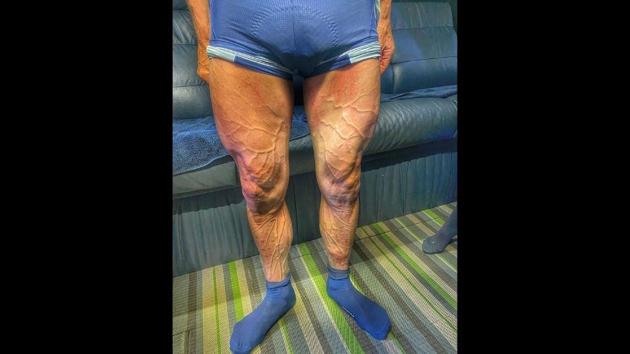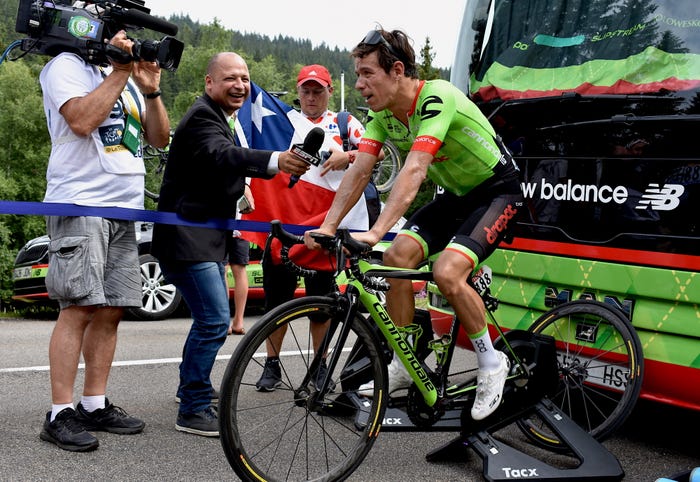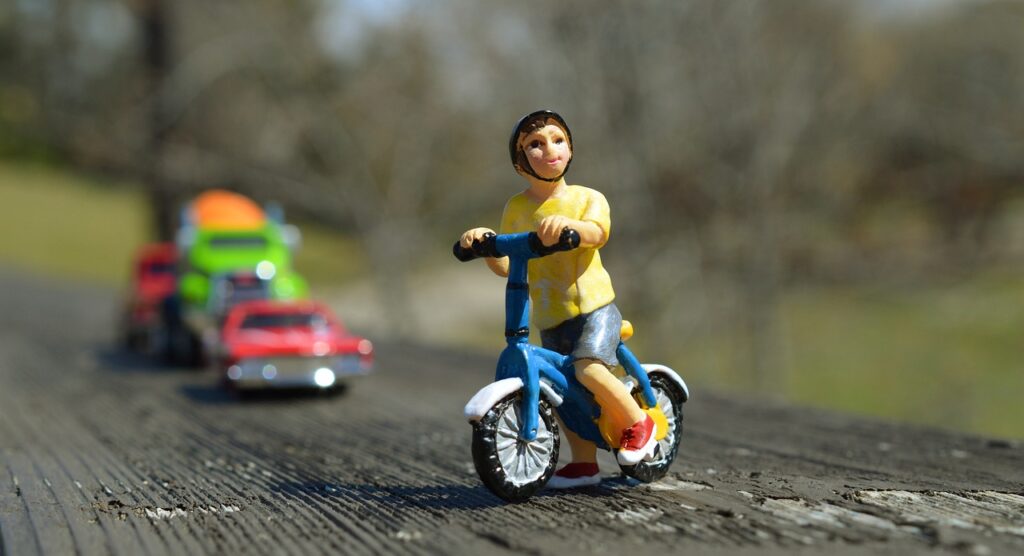Gear And Equipment For Post-race Cycling
Post-race cycling requires the right gear and equipment to ensure a smooth and enjoyable ride. Choosing the right bike and wearing proper clothing is essential for cyclists who continue cycling after a race. The gear and equipment used can greatly impact the cyclist’s comfort and performance, making it crucial to select the most suitable options.
Choosing The Right Bike
When cycling after a race, choosing the right bike is imperative. Cyclists often opt for a road bike or a lightweight hybrid bike, as these are designed to provide speed and agility, ideal for post-race rides. These bikes offer a smooth and efficient riding experience, allowing cyclists to recover and unwind while still enjoying their passion for cycling.
Importance Of Proper Clothing
Proper clothing plays a vital role in post-race cycling. Comfortable and breathable cycling attire is a priority, as it aids in regulating body temperature and wicking away sweat. Wearing moisture-wicking fabrics and padded shorts can help prevent chafing and discomfort during longer post-race rides. Additionally, donning bright and reflective clothing ensures visibility, enhancing safety on the road.
Credit: www.businessinsider.com
Exploring Scenic Routes To Decompress
Cycling enthusiasts know that the thrill of a race doesn’t end when they cross the finish line. In fact, many cyclists continue to cycle after the race to decompress and unwind. Rather than seeing it as a grueling task, riders find solace in exploring scenic routes that provide them with a sense of peace and rejuvenation. Whether it’s connecting with nature or creating a sense of accomplishment, these scenic routes offer cyclists an opportunity to recharge both physically and mentally.
Connecting With Nature
After the intense experience of a race, cyclists often find solace in nature. Riding through picturesque landscapes allows riders to connect with the natural world around them, offering a much-needed respite from the competitive environment of the race. The chirping of birds, the rustling of leaves, and the gentle breeze against their skin create a sensory experience that instills a sense of tranquility. As riders traverse through lush green fields, winding paths, and serene countryside, they become one with nature, soaking in its beauty and finding moments of pure joy and peace along the way.
| Benefits of Connecting with Nature: |
|---|
| – Reduces stress and anxiety |
| – Boosts mood and mental well-being |
| – Increases mindfulness and self-awareness |
| – Improves overall physical health |
Creating A Sense Of Accomplishment
For cyclists, the physical exertion of a race is more than just a test of endurance; it’s a test of mental strength and determination. By continuing to cycle after the race, riders create a sense of accomplishment that transcends the finish line. Each mile conquered, each hill climbed becomes a personal victory and a testament to their unwavering dedication. This post-race cycling experience allows cyclists to push their limits further, proving to themselves that they are capable of achieving even more. The satisfaction of pedaling through new routes and overcoming challenges fuels their self-belief, fostering a deep sense of achievement and fulfillment.
- Enhances self-confidence
- Promotes a sense of personal growth
- Encourages perseverance and determination
- Builds resilience and mental toughness
Social Element Of Cycling Post-race
After an intense and adrenaline-fueled race, one might wonder why cyclists continue to ride even after crossing the finish line. The answer lies in the social element of cycling post-race, which fills riders with a sense of camaraderie and connection. Whether it’s bonding with fellow cyclists or engaging with the cycling community, this aspect of the sport fosters lasting friendships and an ongoing passion for cycling.
Bonding With Fellow Cyclists
Racing brings people together, and once the race is over, cyclists often find themselves seeking out others who have shared a similar experience. The post-race environment serves as a breeding ground for friendships to blossom. Cyclists bond over their common love for the sport, exchanging stories of triumph and challenges on the road.
Through these interactions, not only do cyclists gain new friends, but they also find a support system of like-minded individuals. This shared connection creates a sense of belonging and encourages cyclists to continue riding beyond the finish line, as it provides an avenue for continued camaraderie and growth.
Community Engagement
Cycling is more than just a sport; it is a vibrant community that thrives on engagement. Post-race, cyclists have the opportunity to further immerse themselves in this community. They can participate in group rides or join cycling clubs to connect with other passionate riders.
These community engagements not only serve as a platform for cyclists to expand their social circles but also offer avenues for learning and development. Riders can exchange tips, techniques, and information on the latest cycling trends. This sharing of knowledge helps cyclists improve their skills and stay motivated to cycle regularly.
Moreover, active involvement in the cycling community allows riders to give back. They can participate in fundraisers, charity rides, or volunteer at local cycling events. This altruistic engagement reinforces the sense of community and gives cyclists a deeper sense of purpose, further inspiring them to continue cycling even after the race has ended.
Tips For Avoiding Overtraining And Burnout
Cyclists often continue cycling after the race to avoid overtraining and burnout. By taking rest days, varying their workouts, and listening to their bodies, they can ensure their training remains effective without risking exhaustion.
Listening To The Body
Balancing Cycling With Rest
How Post-race Cycling Contributes To Overall Performance
One might wonder why cyclists continue to cycle even after completing a demanding race. The answer lies in the numerous benefits that post-race cycling offers. Not only does it help maintain fitness levels, but it also enhances recovery for better overall performance.
Maintaining Fitness Levels
Cycling after a race is crucial for maintaining fitness levels. The sustained physical exertion during races can lead to muscular fatigue and tightness. By engaging in low-intensity cycling, cyclists can promote blood flow and oxygen distribution to their muscles. This helps in preventing muscle stiffness and promotes a quicker recovery process.
Moreover, post-race cycling aids in retaining cardiovascular fitness. Consistent cardiovascular exercise improves lung capacity, strengthens the heart, and enhances endurance. By continuing to cycle after a race, cyclists can sustain their cardiovascular fitness, ensuring that their overall performance remains at its peak.
Enhancing Recovery
Post-race cycling plays a crucial role in expediting recovery. The repetitive motion of cycling promotes efficient removal of metabolic waste products, such as lactic acid, from the muscles. This helps reduce muscle soreness and accelerates the recovery process.
In addition, cycling after a race improves blood circulation, which aids in the delivery of essential nutrients and oxygen to the fatigued muscles. This influx of nutrients helps repair damaged tissues more effectively, enabling cyclists to bounce back faster and perform at their best.
Furthermore, post-race cycling also assists in loosening stiff muscles and joints. The gentle motion of pedaling helps alleviate stiffness and improves flexibility, reducing the risk of injury during subsequent training sessions and races.
Environmental Impact Of Post-race Cycling
After a race, cyclists continue cycling to cool down and recover, but this prolonged activity can have environmental impacts. From increasing carbon emissions to contributing to air pollution, post-race cycling can have a negative effect on the environment. Cyclists should consider the environmental impact when deciding whether to continue cycling after a race.
Promoting Sustainable Transportation
Cyclists continue to ride post-race, fostering a culture of sustainable transportation.
Reducing Carbon Footprint
Post-race cycling assists in lowering emissions, contributing to reducing carbon footprint.
Frequently Asked Questions
Why Do Cyclists Warm Down After Race?
Cyclists warm down after a race to gradually lower heart rate and reduce muscle tension. This aids recovery and helps prevent injury.
What Do Cyclists Do When They Have To Pee?
Cyclists find a discreet spot off the road, communicate with their group, and use a portable urination device or appropriate bathroom facilities.
Why Do They Ride Stationary Bikes After Tour De France?
After the Tour de France, riders often use stationary bikes for recovery. These bikes help them cool down and gradually reduce muscle tension. Stationary cycling also aids in flushing out waste products, promoting blood flow, and preventing muscle soreness. It’s an essential part of their post-race routine.
Why Do Cyclists Cycle In The Middle Of The Road?
Cyclists ride in the middle for safety and visibility, avoiding obstacles at the roadside. It helps prevent cars from passing too closely and reduces the risk of accidents. Cyclists may also avoid road edges to steer clear of debris and potholes.
Conclusion
Cycling after a race offers several physical and mental benefits. By continuing to cycle, athletes can aid in their recovery, improve their endurance, and maintain their fitness levels. Furthermore, the post-race ride provides a sense of accomplishment and enjoyment, establishing a healthy post-competition routine.
Cyclists should embrace the opportunity to further their passion for cycling beyond the finish line.
Cyclists continue to cycle after a race to cool down their muscles and gradually reduce their heart rate. After intense physical activity, it is important for athletes to engage in a cool-down period, which helps prevent muscle soreness and aids in recovery.
Cycling allows for gentle movement that keeps blood circulating, promoting oxygen delivery to the muscles and removing waste products. This post-race routine also facilitates the removal of lactic acid build-up and reduces the risk of cramps. Moreover, cycling provides a low-impact form of exercise that is less strenuous on the joints compared to running or other high-impact activities.
By incorporating cycling into their post-race routine, cyclists can improve their overall performance and maintain their fitness level.

Credit: www.montaguebikes.com
The Physical And Mental Benefits Of Post-race Cycling
The Physical and Mental Benefits of Post-Race Cycling
Building Endurance
Post-race cycling helps build endurance in cyclists’ muscles for future competitions.
Recovery And Injury Prevention
Cycling after a race aids in faster recovery and prevents injuries by promoting blood circulation.
Mental Relaxation
After a demanding race, cyclists engage in post-race cycling to mentally relax and unwind, reducing stress levels.

Credit: www.hindustantimes.com
Nutritional Considerations For Post-race Cycling
Refueling The Body
Post-race, cyclists must replenish carbohydrate stores for energy recovery.
- Consuming a mix of protein and carbs aids muscle repair.
- Quickly refuel with energy bars or shakes after intense cycling.
Hydration Strategies
Staying hydrated is crucial to prevent dehydration during and after cycling.
- Drink adequate water to replenish fluids lost through sweat.
- Consider electrolyte beverages to maintain the body’s balance.
Gear And Equipment For Post-race Cycling
Post-race cycling requires the right gear and equipment to ensure a smooth and enjoyable ride. Choosing the right bike and wearing proper clothing is essential for cyclists who continue cycling after a race. The gear and equipment used can greatly impact the cyclist’s comfort and performance, making it crucial to select the most suitable options.
Choosing The Right Bike
When cycling after a race, choosing the right bike is imperative. Cyclists often opt for a road bike or a lightweight hybrid bike, as these are designed to provide speed and agility, ideal for post-race rides. These bikes offer a smooth and efficient riding experience, allowing cyclists to recover and unwind while still enjoying their passion for cycling.
Importance Of Proper Clothing
Proper clothing plays a vital role in post-race cycling. Comfortable and breathable cycling attire is a priority, as it aids in regulating body temperature and wicking away sweat. Wearing moisture-wicking fabrics and padded shorts can help prevent chafing and discomfort during longer post-race rides. Additionally, donning bright and reflective clothing ensures visibility, enhancing safety on the road.
Credit: www.businessinsider.com
Exploring Scenic Routes To Decompress
Cycling enthusiasts know that the thrill of a race doesn’t end when they cross the finish line. In fact, many cyclists continue to cycle after the race to decompress and unwind. Rather than seeing it as a grueling task, riders find solace in exploring scenic routes that provide them with a sense of peace and rejuvenation. Whether it’s connecting with nature or creating a sense of accomplishment, these scenic routes offer cyclists an opportunity to recharge both physically and mentally.
Connecting With Nature
After the intense experience of a race, cyclists often find solace in nature. Riding through picturesque landscapes allows riders to connect with the natural world around them, offering a much-needed respite from the competitive environment of the race. The chirping of birds, the rustling of leaves, and the gentle breeze against their skin create a sensory experience that instills a sense of tranquility. As riders traverse through lush green fields, winding paths, and serene countryside, they become one with nature, soaking in its beauty and finding moments of pure joy and peace along the way.
| Benefits of Connecting with Nature: |
|---|
| – Reduces stress and anxiety |
| – Boosts mood and mental well-being |
| – Increases mindfulness and self-awareness |
| – Improves overall physical health |
Creating A Sense Of Accomplishment
For cyclists, the physical exertion of a race is more than just a test of endurance; it’s a test of mental strength and determination. By continuing to cycle after the race, riders create a sense of accomplishment that transcends the finish line. Each mile conquered, each hill climbed becomes a personal victory and a testament to their unwavering dedication. This post-race cycling experience allows cyclists to push their limits further, proving to themselves that they are capable of achieving even more. The satisfaction of pedaling through new routes and overcoming challenges fuels their self-belief, fostering a deep sense of achievement and fulfillment.
- Enhances self-confidence
- Promotes a sense of personal growth
- Encourages perseverance and determination
- Builds resilience and mental toughness
Social Element Of Cycling Post-race
After an intense and adrenaline-fueled race, one might wonder why cyclists continue to ride even after crossing the finish line. The answer lies in the social element of cycling post-race, which fills riders with a sense of camaraderie and connection. Whether it’s bonding with fellow cyclists or engaging with the cycling community, this aspect of the sport fosters lasting friendships and an ongoing passion for cycling.
Bonding With Fellow Cyclists
Racing brings people together, and once the race is over, cyclists often find themselves seeking out others who have shared a similar experience. The post-race environment serves as a breeding ground for friendships to blossom. Cyclists bond over their common love for the sport, exchanging stories of triumph and challenges on the road.
Through these interactions, not only do cyclists gain new friends, but they also find a support system of like-minded individuals. This shared connection creates a sense of belonging and encourages cyclists to continue riding beyond the finish line, as it provides an avenue for continued camaraderie and growth.
Community Engagement
Cycling is more than just a sport; it is a vibrant community that thrives on engagement. Post-race, cyclists have the opportunity to further immerse themselves in this community. They can participate in group rides or join cycling clubs to connect with other passionate riders.
These community engagements not only serve as a platform for cyclists to expand their social circles but also offer avenues for learning and development. Riders can exchange tips, techniques, and information on the latest cycling trends. This sharing of knowledge helps cyclists improve their skills and stay motivated to cycle regularly.
Moreover, active involvement in the cycling community allows riders to give back. They can participate in fundraisers, charity rides, or volunteer at local cycling events. This altruistic engagement reinforces the sense of community and gives cyclists a deeper sense of purpose, further inspiring them to continue cycling even after the race has ended.
Tips For Avoiding Overtraining And Burnout
Cyclists often continue cycling after the race to avoid overtraining and burnout. By taking rest days, varying their workouts, and listening to their bodies, they can ensure their training remains effective without risking exhaustion.
Listening To The Body
Balancing Cycling With Rest
How Post-race Cycling Contributes To Overall Performance
One might wonder why cyclists continue to cycle even after completing a demanding race. The answer lies in the numerous benefits that post-race cycling offers. Not only does it help maintain fitness levels, but it also enhances recovery for better overall performance.
Maintaining Fitness Levels
Cycling after a race is crucial for maintaining fitness levels. The sustained physical exertion during races can lead to muscular fatigue and tightness. By engaging in low-intensity cycling, cyclists can promote blood flow and oxygen distribution to their muscles. This helps in preventing muscle stiffness and promotes a quicker recovery process.
Moreover, post-race cycling aids in retaining cardiovascular fitness. Consistent cardiovascular exercise improves lung capacity, strengthens the heart, and enhances endurance. By continuing to cycle after a race, cyclists can sustain their cardiovascular fitness, ensuring that their overall performance remains at its peak.
Enhancing Recovery
Post-race cycling plays a crucial role in expediting recovery. The repetitive motion of cycling promotes efficient removal of metabolic waste products, such as lactic acid, from the muscles. This helps reduce muscle soreness and accelerates the recovery process.
In addition, cycling after a race improves blood circulation, which aids in the delivery of essential nutrients and oxygen to the fatigued muscles. This influx of nutrients helps repair damaged tissues more effectively, enabling cyclists to bounce back faster and perform at their best.
Furthermore, post-race cycling also assists in loosening stiff muscles and joints. The gentle motion of pedaling helps alleviate stiffness and improves flexibility, reducing the risk of injury during subsequent training sessions and races.
Environmental Impact Of Post-race Cycling
After a race, cyclists continue cycling to cool down and recover, but this prolonged activity can have environmental impacts. From increasing carbon emissions to contributing to air pollution, post-race cycling can have a negative effect on the environment. Cyclists should consider the environmental impact when deciding whether to continue cycling after a race.
Promoting Sustainable Transportation
Cyclists continue to ride post-race, fostering a culture of sustainable transportation.
Reducing Carbon Footprint
Post-race cycling assists in lowering emissions, contributing to reducing carbon footprint.
Frequently Asked Questions
Why Do Cyclists Warm Down After Race?
Cyclists warm down after a race to gradually lower heart rate and reduce muscle tension. This aids recovery and helps prevent injury.
What Do Cyclists Do When They Have To Pee?
Cyclists find a discreet spot off the road, communicate with their group, and use a portable urination device or appropriate bathroom facilities.
Why Do They Ride Stationary Bikes After Tour De France?
After the Tour de France, riders often use stationary bikes for recovery. These bikes help them cool down and gradually reduce muscle tension. Stationary cycling also aids in flushing out waste products, promoting blood flow, and preventing muscle soreness. It’s an essential part of their post-race routine.
Why Do Cyclists Cycle In The Middle Of The Road?
Cyclists ride in the middle for safety and visibility, avoiding obstacles at the roadside. It helps prevent cars from passing too closely and reduces the risk of accidents. Cyclists may also avoid road edges to steer clear of debris and potholes.
Conclusion
Cycling after a race offers several physical and mental benefits. By continuing to cycle, athletes can aid in their recovery, improve their endurance, and maintain their fitness levels. Furthermore, the post-race ride provides a sense of accomplishment and enjoyment, establishing a healthy post-competition routine.
Cyclists should embrace the opportunity to further their passion for cycling beyond the finish line.



